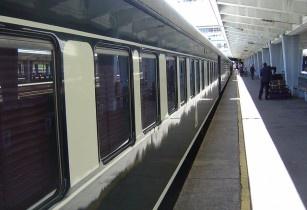Siemens Mobility and Softil have jointly announced an agreement that will see a range of next-generation communications solutions come to market for use in long term evolution-railway (LTE-R) railways as well as mission-critical push-to-talk (MCPTT) metro applications like underground tram buses etc
The MCX solutions aim to support the future railway mobile communications systems (FRMCS) of the International Union of Railways (UIC) to build a global rail traffic management system (GRTMS) for the entire rail industry, bringing significant economic and operational benefits and efficiencies to operators in the process.
“The rail industry is at the forefront of the mission-critical communication revolution and GSM-R based systems have already been replaced by LTE-R solutions in the Asia-Pacific (APAC) and the trend is expected to widen across other markets in 2019/20,” said Pierre Hagendorf, CEO of Softil.
The new radio system for the railway industry aims to guarantee the interoperability with GSM-R whilst delivering on these three main areas:
· Critical communications: Secure voice communication between driver and signaller, provision for emergency and group calls, real-time video imagery for any occurring incidents and the intelligent bearer for European Train Control System (ETCS) and Automatic Train Operation (ATO) operation
· Performance communications: Track condition monitoring, connected driver advisory system (C-DAS), on-train telemetry, maintenance of non-critical infrastructure, non-critical real-time video, wireless communication for on-train-staff
· Business communications: Passenger information system, passenger entertainment and passenger communication connections
“The rail industry is facing unprecedented challenges in handling increasing numbers of passengers and freight traffic loads,” noted Russell Clarke, general manager, mobile communications at Siemens Mobility.
LTE-R is the foundation for the railway variant of the 3GPP MCC over LTE/5G (MCPTT) standard. What sets the LTE-R technology apart from the currently used GSM-R is that it brings the full power of broadband networks including voice, video, text, images, location and more and not just simple voice.
The Softil BEEHD framework is LTE-R compatible and set to enable Siemens Mobility’s solutions to deliver stable voice as well as data communications on trains running at speeds in excess of 400km per hour.
LTE-R technology makes possible live tracking of a train and transmitting railroad information to engine drivers, and also enables multimedia-based group calling and SMS services on top of voice call services. Additionally, real-time group/individual communication is made possible between train engineers and control centres.





















